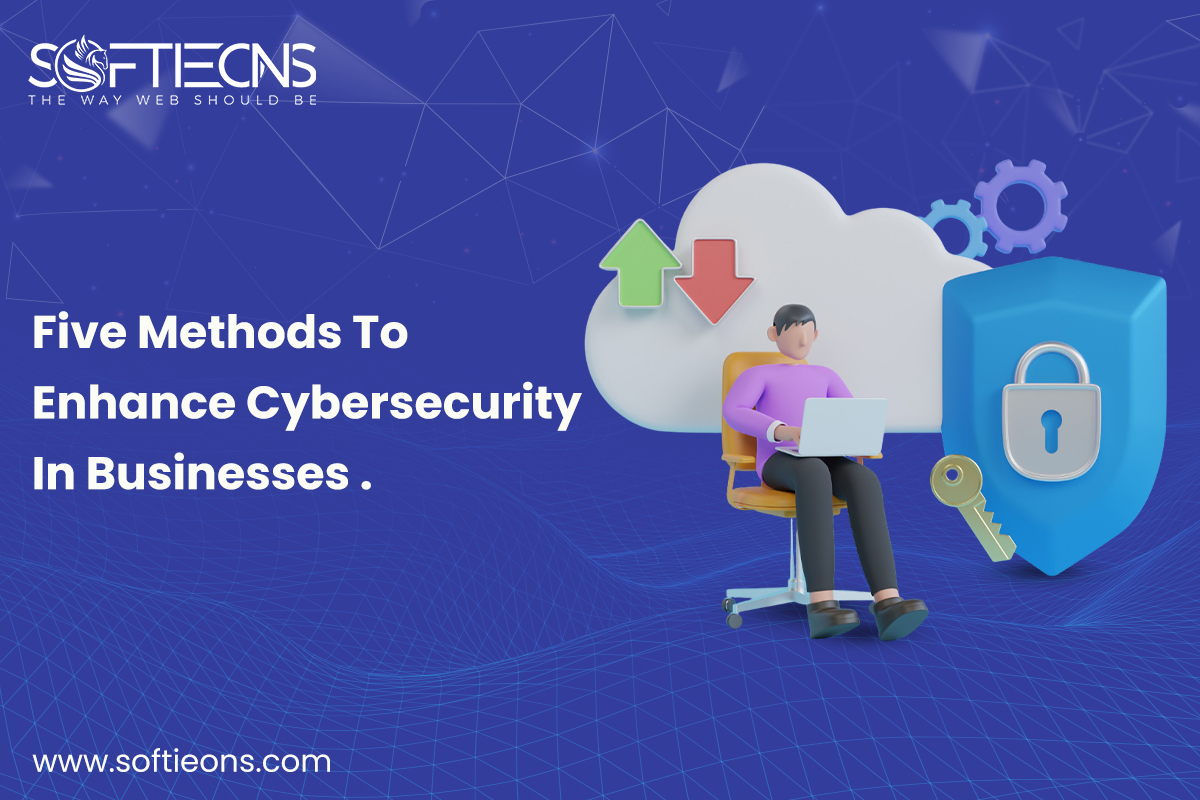Five Methods to Enhance Cybersecurity in Businesses
Sat, 18 May 2024
In today's digital age, cybersecurity is a critical concern for businesses of all sizes. As cyber threats continue to evolve, protecting sensitive data and maintaining the integrity of your IT infrastructure has never been more important. Implementing robust cybersecurity measures can prevent data breaches, protect your reputation, and ensure the smooth operation of your business. Here are five essential methods to enhance cybersecurity in your business.
1. Implement Multi-Factor Authentication (MFA)
Digital India marketing, there is Multi-Factor Authentication (MFA) is a security system that requires more than one method of authentication to verify a user's identity. This typically involves a combination of:
Something you know (password or PIN)
Something you have (smartphone or hardware token)
Something you are (fingerprint or facial recognition)
By requiring multiple forms of verification, MFA significantly reduces the risk of unauthorized access, even if a password is compromised. Implementing MFA across all systems and applications ensures an additional layer of security that can deter cybercriminals.
How to Implement MFA:
Choose an MFA solution that integrates with your existing systems.
Educate employees on the importance of MFA and how to use it.
Regularly update and review MFA policies to adapt to new threats.
2. Conduct Regular Security Training and Awareness Programs
Employees are often the weakest link in cybersecurity. Human error, such as clicking on phishing emails or using weak passwords, can lead to significant security breaches. Regular security training and awareness programs can help mitigate these risks.
Key Components of Security Training:
Phishing Simulations: Regularly test employees with simulated phishing attacks to teach them how to recognize and avoid real threats.
Password Management: Educate employees on the importance of using strong, unique passwords and how to use password managers.
Incident Response: Train employees on the proper procedures for reporting security incidents and suspicious activities.
Benefits of Security Training:
Increased awareness of cyber threats.
Improved ability to recognize and avoid potential attacks.
Enhanced overall security posture of the organization.
3. Keep Software and Systems Updated
Mobile software development company and systems up-to-date is crucial for protecting against vulnerabilities that can be exploited by cybercriminals. This includes operating systems, applications, and firmware.
Steps to Ensure Up-to-Date Software:
Regular Patch Management: Implement a patch management process to ensure all systems receive updates and patches in a timely manner.
Automated Updates: Enable automatic updates wherever possible to reduce the chances of human oversight.
Vulnerability Scanning: Regularly scan your network for vulnerabilities and address any issues promptly.
Impact of Up-to-Date Systems:
Reduced risk of exploitation of known vulnerabilities.
Improved system performance and stability.
Enhanced compliance with industry regulations and standards.
4. Use Encryption to Protect Sensitive Data
Encryption is the process of converting data into a code to prevent unauthorized access. By encrypting sensitive data, businesses can ensure that even if data is intercepted or accessed without authorization, it remains unreadable and secure.
Types of Encryption:
Data at Rest Encryption: Protects data stored on devices and servers.
Data in Transit Encryption: Secures data being transmitted across networks, such as emails and online transactions.
Implementing Encryption:
Use strong encryption protocols (e.g., AES-256) for both data at rest and in transit.
Ensure encryption keys are stored securely and managed properly.
Regularly review and update encryption practices to stay ahead of emerging threats.
5. Develop and Enforce a Comprehensive Cybersecurity Policy
A comprehensive cybersecurity policy outlines the procedures and guidelines for maintaining security within an organization. This policy should cover all aspects of cybersecurity, from password management to incident response.
Key Elements of a Cybersecurity Policy:
Access Controls: Define who has access to what data and systems, and enforce least privilege principles.
Incident Response Plan: Establish a clear plan for responding to and recovering from cybersecurity incidents.
Data Protection: Outline how sensitive data is handled, stored, and protected.
Creating an Effective Cybersecurity Policy:
Involve key stakeholders in the development of the policy.
Ensure the policy is comprehensive, covering all potential security risks and scenarios.
Regularly review and update the policy to adapt to new threats and changes in the business environment.
Communicate the policy to all employees and provide training to ensure compliance.
Conclusion
Enhancing cybersecurity in your business is an ongoing process that requires diligence, education, and the implementation of robust security measures. By adopting multi-factor authentication, conducting regular security training, keeping software updated, using encryption, and developing a comprehensive cybersecurity policy, you can significantly reduce the risk of cyber threats and protect your business from potential attacks. Prioritizing cybersecurity not only safeguards your data but also builds trust with your clients and stakeholders, ensuring the long-term success of your business.
POPULAR POSTS
Shopify vs. WordPress: Which one is best for e-commerce?
Wed, 07 Apr 2021Role of IoT in the Real Estate Industry
Wed, 14 Apr 2021Why UX And UI Is Important For Mobile Application Development
Sat, 01 May 2021Telemedicine's Advantages in Nursing Homes
Fri, 24 Dec 2021RECENT POSTS
Title: Run Your Entire Real Estate Business From Your Phone
Fri, 12 Dec 2025









